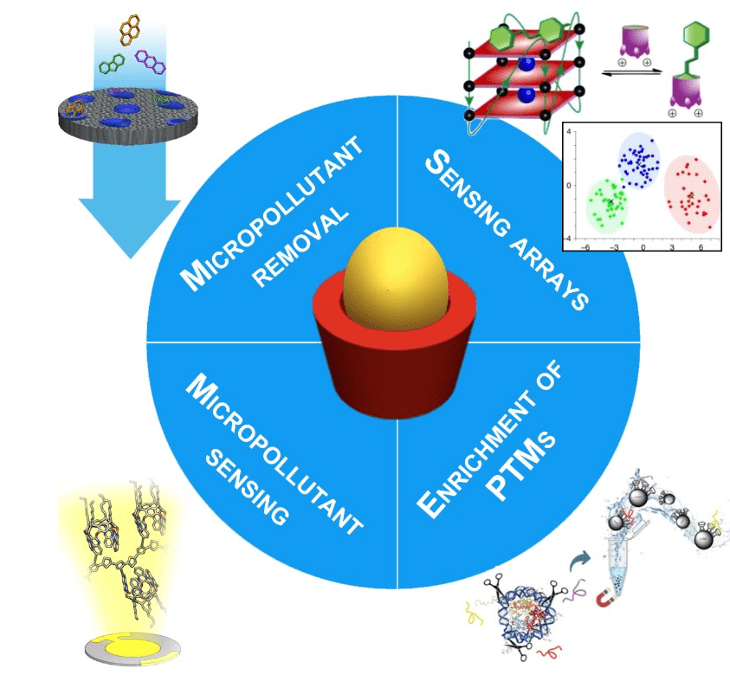
 27/06/2025
27/06/2025
 12:00 h
12:00 h
 ICIQ Auditorium Prof. Dr. Kilian Muñiz
ICIQ Auditorium Prof. Dr. Kilian Muñiz
- Lecturer: Prof. Roberta Pinalli
- University: Università degli Studi di Parma, Italy
- Sponsored by:

Exploiting Host-Guest Chemistry in Sensing Array, Enrichment of PTMs on Histone Protein and RNA, and Water Micropollutant Detection and Removal
Abstract
Host-guest chemistry is one of the pillar of Supramolecular Chemistry and it is based on molecular recognition. The selective binding of a guest by a host to form a supramolecular complex requires, beside shape complementarity, the presence of specific weak interactions such as hydrogen bonding, π–π stacking, CH–π, and cation–π.1 In general, a host-guest system presents a macrocycle receptor as host able to selectively recognize a guest unit. To date, macrocycles like crown ethers, calixarenes, cucurbit[n]urils, calix[4]pirrols and cavitands have been the workhorses of molecular receptors, exhibiting excellent molecular recognition properties towards a large class of guests.2 All these classes of compounds have in common the presence of an enforced cavity of molecular dimensions which acts as molecular recognition site for the incoming analytes. In this lecture, I will present some selected examples on the use of cavitand receptors to create (i) a host-guest sensing array for G-quadruplex structures,3 (ii) functionalized ferromagnetic nanoparticles for the enrichment of post-translational modifications (PTMs) on histone protein4 and RNA filament, (iii) a cavitand coated piezoelectric sensor for environmental sensing of aromatic hydrocarbon in water,5 and (iv) a reusable cavitand functionalized membrane for the removal of polycyclic aromatic hydrocarbons from water.6.

1 J. L. Atwood, Comprehensive Supramolecular Chemistry II, 2nd ed., vol. 3., Oxford: Elsevier, 2017.
2 R. Pinalli, A. Pedrini, E. Dalcanale, Chem. Soc. Rev., 2018, 47, 7006.
3 J. Chen, B. L. Hickey, L. Wang, J. Lee, A. D. Gill, A. Favero, R. Pinalli, E. Dalcanale, R. J. Hooley, W. Zhong, W. Nature Chemistry, 2021,13, 488.
4 M. Orlandini, A. Bonacini, A. Favero, A. Secchi, L. Lazzarini, R. Verucchi, E. Dalcanale, Alessandro Pedrini, Simone Sidoli* and R. Pinalli*:
Enrichment of histone tail methylated lysine residues via cavitand-decorated magnetic nanoparticles for ultra-sensitive proteomics, Chem Sci., 2024, 15, 13102 – 13110.
5 M. Giannetto, A. Pedrini, S. Fortunati, D. Brando, S. Milano, C. Massera, R. Tatti, R. Verucchi, M. Careri, E. Dalcanale, R. Pinalli, Sens. Actuators B Chem. 2018, 276, 340.
6 M. Amorini, N. Riboni, L. Pesenti, V. A. Dini, A. Pedrini, C. Massera, C. Gualandi, F. Bianchi, R. Pinalli, E. Dalcanale, Small 2022, 18,2104946.
Other events

Let's create a brighter future
Join our team to work with renowned researchers, tackle groundbreaking
projects and contribute to meaningful scientific advancements




















